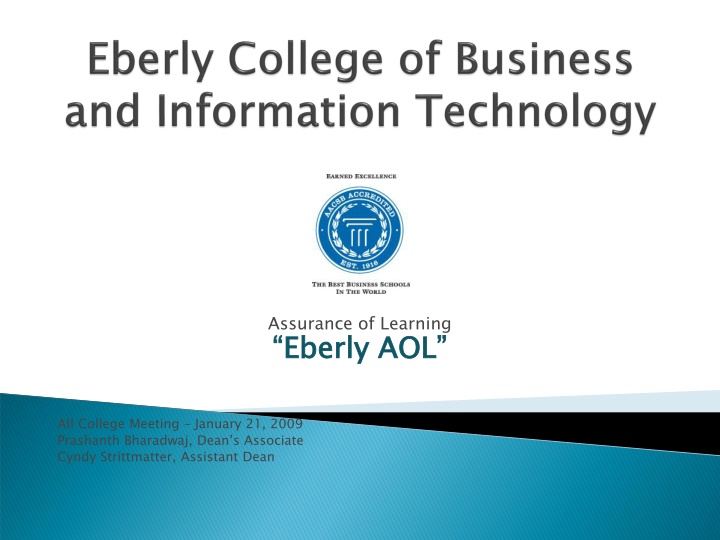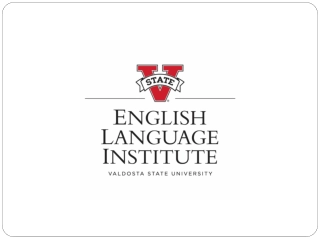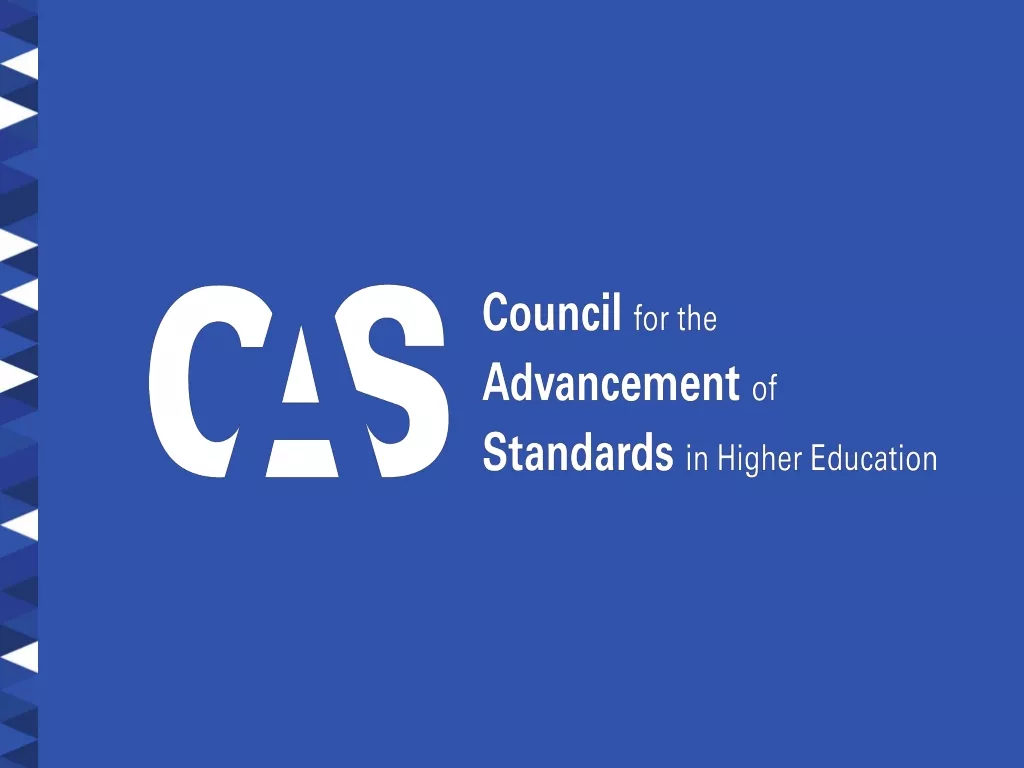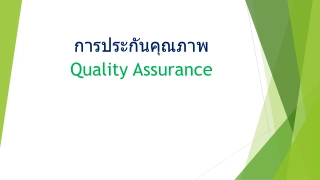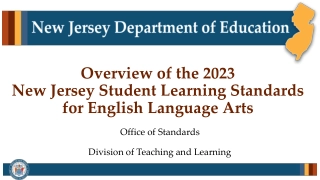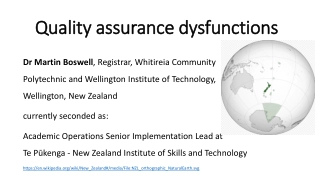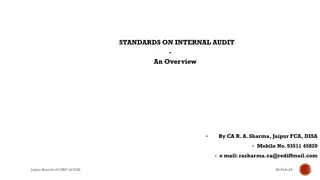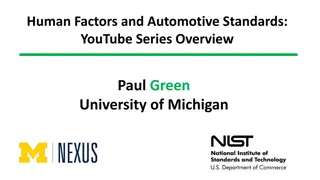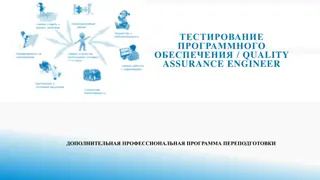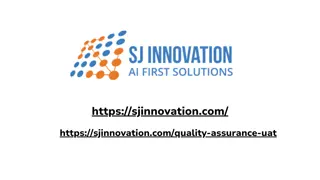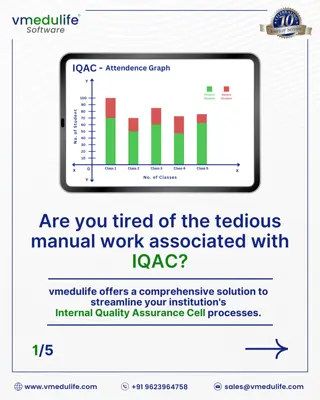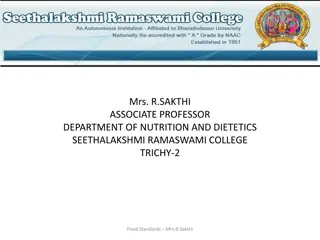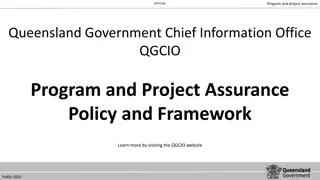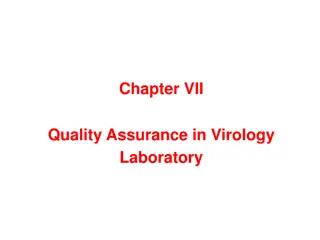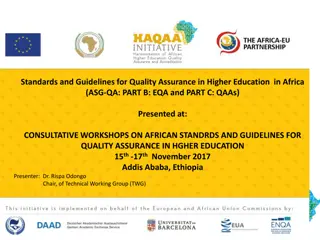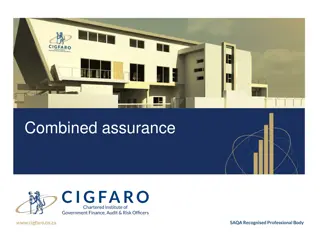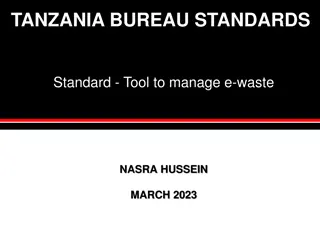Assurance of Learning Eberly AOL - AACSB Standards Overview
This presentation outlines the importance and process of AACSB International accreditation in the context of Assurance of Learning (AOL) at Eberly College. It covers key milestones, self-study compilations, and challenges faced in aligning with accreditation standards.
Download Presentation

Please find below an Image/Link to download the presentation.
The content on the website is provided AS IS for your information and personal use only. It may not be sold, licensed, or shared on other websites without obtaining consent from the author.If you encounter any issues during the download, it is possible that the publisher has removed the file from their server.
You are allowed to download the files provided on this website for personal or commercial use, subject to the condition that they are used lawfully. All files are the property of their respective owners.
The content on the website is provided AS IS for your information and personal use only. It may not be sold, licensed, or shared on other websites without obtaining consent from the author.
E N D
Presentation Transcript
Assurance of Learning Eberly AOL Eberly AOL All College Meeting January 21, 2009 Prashanth Bharadwaj, Dean s Associate Cyndy Strittmatter, Assistant Dean
Introduce AACSB standards related to Assurance of Learning AOL Build upon the work that was done by the Strategic Planning Subcommittee on Outcomes Assessment Recognize that Accreditation is a COLLEGE- WIDE endeavor 2
AACSB International accreditation represents the highest standard of achievement for business schools, worldwide. Institutions that earn accreditation confirm their commitment to quality and continuous improvement through a rigorous and comprehensive peer review. AACSB International accreditation is the hallmark of excellence in management education. 3
AACSB International accreditation assures stakeholders that business schools: Manage resources to achieve a vibrant and relevant mission. Advance business and management knowledge through faculty scholarship. Provide high-caliber teaching of quality and current curricula. Cultivate meaningful interaction between students and a qualified faculty. Produce graduates who have achieved specified learning goals. 4
Started efforts in 1982 Accreditation Council formed in 1988 Accreditation Self-Study 1998-1999 Deferral in 1999-2000 Inadequate scholarship productivity in two departments Accredited Spring 2001 Directed to continue efforts to increase scholarly productivity 5
Compile Self-Study in 2009-2010 Polish Self-Study in early Fall 2010 Submit to Team in mid Fall 2010 Complete Evidence Room Fall 2010 Visit in February 2011 6
AOL is assessment Move to implement has been underway for past 4-5 years within AACSB Efforts have been mixed thus far Guideposts are becoming clearer ON !! Pressure is ON !! Must have our house in order 7
The systematic collection, review, and use of information about educational programs undertaken for the purpose of improving student learning and development (Polomba and Banta, 1999) The end goal is continuous improvement in student learning and achievement 8
We want high quality business programs! What do our graduates need in order to be prepared for the marketplace? 9
21 Standards for Business Accreditation Standards #15-21 focus on Assurance of Learning (AOL) 10
The school uses well-documented, systematic processes to develop, monitor, evaluate, and revise the substance and delivery of the curricula on learning .. Requires use of a systematic process for curriculum management 11
the school specifies learning goals and demonstrates achievement of learning goals for key general, management-specific and/or appropriate discipline specific knowledge and skills that its students achieve . 12
KEEP IT SIMPLE !! 13
STEP #1 Define learning goals and objectives: program? STEP #2: Align curriculum with goals: learning goals/objectives? What program? What What are the most important things our students should learn in our What are our expectations are the most important things our students should learn in our are our expectations? ? Identify how and where they will learn these things. Where is the best place to determine if our students have achieved our learning goals/objectives? Identify how and where they will learn these things. Where is the best place to determine if our students have achieved our STEP #3: Identify instruments and measures and collect, analyze and disseminate data: measures can we use? How will we know they have learned them? What direct and indirect How will we know they have learned them? What direct and indirect measures can we use? STEP #4: Use assessment data for continuous improvement: How will we use this information for continuous improvement? We How will we use this information for continuous improvement? We must must close the loop! close the loop! 14
Must implement AOL Process for each Program Undergraduate majors constitute ONE program MBA EMBA MSIT Program goals at UG and Grad level may be similar but they need different assessments 15
Follow the process! Less is More Don t overdo it Keep plan manageable Not all students must be assessed must be a valid sample/representative group Limit learning goals from 4-8 for each program Limit learning objectives 2-3 for each learning goal Assess each goal twice every five years Distribute assessment among core courses 16
Critical Thinkers Competency in their Discipline Effective Communications Effective Decision Makers Ethical Behavior Global Perspective Integrate across disciplines Knowledge of all business disciplines Problem Solvers Team Players 17
Step #1 Learning Goal* to communicate effectively upon graduation. Learning Objective #1 They should be able to produce professional quality written communications Learning Objective #2 They should be able to deliver professional quality oral presentations Learning Objective #3 They should be able to demonstrate effective communication skills in a team setting Learning Goal*: We expect our graduates to be able * Learning Goals have been previously established by the SPC 18
Step #2 Curriculum Alignment measure the achievement of these specific objectives in: BTST 321 They should be able to produce professional quality written communications BTST 321 & MGMT 495 They should be able to deliver professional quality oral presentations BTST 321 They should be able to demonstrate effective communication skills in a team setting Curriculum Alignment: We will best be able to 19
Program assessment involves evaluation of student learning across the curriculum Program assessment is a curriculum function and hence the responsibility of ALL faculty Program assessment is not a course function and hence does not assess a particular course Program assessment is not about evaluating faculty It is about evaluating student learning to assist in program improvement 20
Things that we need to document: We need to specify the curriculum process How do we manage our curriculum? Who is involved? 21
